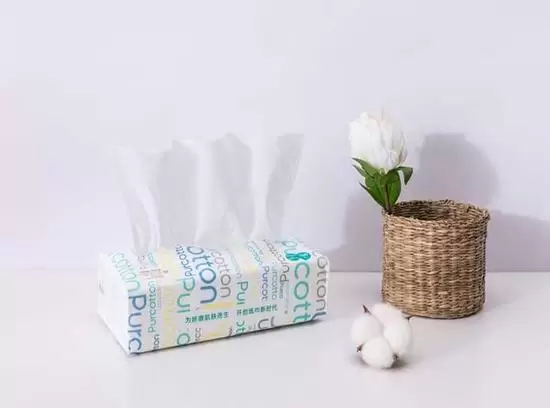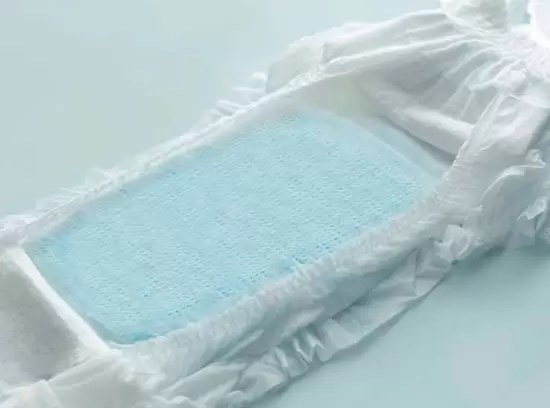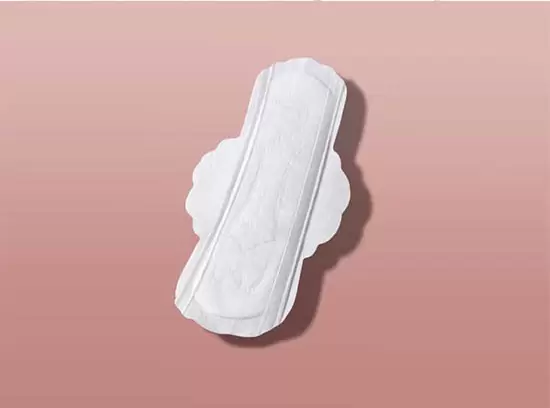1. The core of sanitary napkins is the absorbent layer
The surface layer of the sanitary napkin, which is responsible for wrapping the absorbent material, attracts the most attention because it is in direct contact with the skin. With the improvement of public health awareness, the development direction of conventional sanitary napkins has gradually evolved from a soft cotton surface (plastic material) to a cotton surface (100% cotton material). Sanitary napkins with the concept of organic cotton surface layer began to appear on the market, making the evolution of surface layer material to the extreme. It is a pity that only the surface layer is made of organic cotton, which is actually a far cry from organic cotton sanitary napkins. The real material core of sanitary napkins lies in the absorbent material used in the middle.
2. The absorbent layer of conventional panty napkins
Whether it is a well-known brand or an imported Japanese panty napkin, there are actually only two core materials for the absorbent layer: fluff pulp and SAP. Fluff pulp is the cellulose that remains after bleaching wood chips, removing wax from plant fibers by chemical solvent methods. The potential health problem of fluff pulp is that the chemical solvent used in the processing process may be decomposed into substances that are potentially harmful to the human body under high temperature and high pressure, and a certain amount of these substances will inevitably remain in the fluff pulp. Compared with the potential harm to the human body, the pollution of fluff pulp production to the environment is naked. SAP polymer water absorbent resin is one of petroleum derivatives. Not only can it absorb water, but it can also lock water. It is the key to the long-term use of conventional panty napkins without side leakage.
Organic cotton is used as a raw material instead of trees, bleached with hydrogen peroxide, degreased with sodium hydroxide (alkali), and made into the organic cotton surface layer and organic cotton absorption layer. All chemicals used in the whole process have passed the approval of GOTS (International Organic Textile Standard) certification, and the production sewage treatment has also passed the certification audit. Compared with the organic cotton sanitary napkins of European brands, after a year and a half of repeated tests, the organic cotton sanitary napkins have significantly improved in terms of technology.
3. Suit is best. Sanitary napkins do not need too high absorption
Side leakage is really troublesome, so the absorption capacity has become the most significant selling point of sanitary napkins. However, should no side leaking really be the only criterion for us to choose sanitary napkins? The menstrual period is generally about 5 days, and there are just 2 days with more amount, when the absorption capacity of the sanitary napkin is indeed an important indicator. But for another 3 days when the amount is not so much, we should return to the comfort and safety of sanitary napkin. In addition to functionality, sanitary napkins should also give equal importance to safety and comfort as a close-to-body product. Excessive absorption will make users feel that sanitary napkins do not need to be replaced frequently, which is a potential hazard of causing gynecological diseases. When the amount is large, replace it every 2 to 3 hours, which can not only prevent side leakage, but also prevent nutrient-rich menstrual blood from becoming a breeding ground for bacteria.
During the menstrual period, take care of yourself gently, put down the endless work on your mobile phone, and take a few days away from housework. Give yourself space for rest and self-growth, read a book that you haven’t had time to read for a long time, and use yoga to gently stretch your tense shoulders and necks. Thanks to pieces of organic cotton sanitary towels, we can constantly love ourselves and accumulate energy to love our family and become the engine of family growth.













